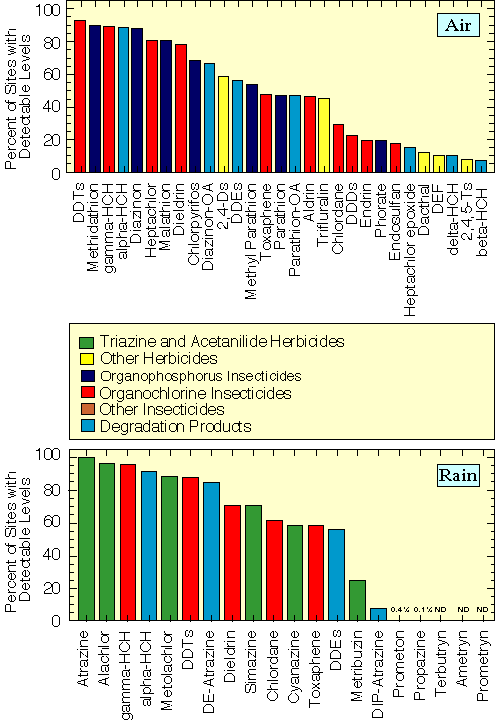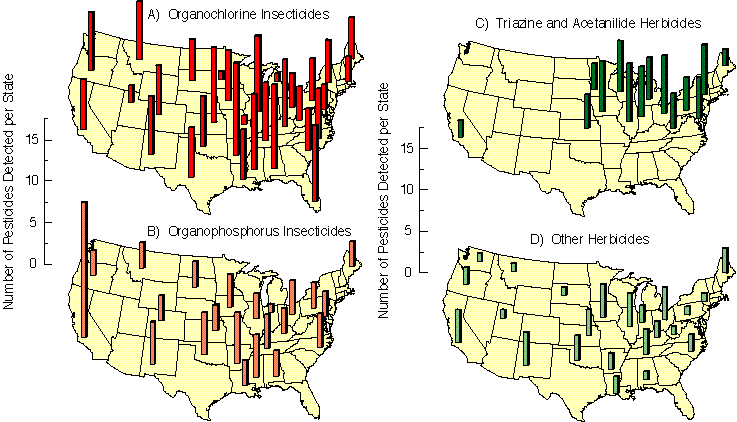National Water-Quality Assessment (NAWQA) Project
Go to:
Most pesticides that have been studied in the atmosphere have been detected, and many pesticides from several different chemical groups have been detected at more than half the sites sampled nationwide (see Figure 3). Results for different groups and individual pesticides reflect a range of influencing factors.

Organophosphorus insecticides also have been used heavily for decades and account for 65 percent of insecticide use today. Generally, they are not as long-lived in the environment as the organochlorine insecticides, but have nevertheless been detected in the air and rain of many states (see Figure 4), even though they are not often included as target analytes. The organophosphorus insecticides detected most often in air, rain, and fog were diazinon, methyl parathion, parathion, malathion, chlorpyrifos, and methidathion. Diazinon, methyl parathion, parathion, and malathion have been among the most widely used insecticides in each of the last three decades, although parathion, malathion, and diazinon use is declining.

The use of triazine herbicides has increased from 24 million pounds in 1966 to nearly 104 million pounds in 1988, accounting for about 23 percent of national herbicide use. Studies that searched for these compounds in the atmosphere did not begin until the late 1970's, when atrazine was detected in Maryland precipitation. Since then, atrazine and other triazine herbicides have been detected in rain in many midwestern and northeastern states, sometimes at high levels.
The acetanilide herbicides, which include alachlor and metolachlor, comprised about 26 percent of total herbicide use in 1988, up from only 5 percent in 1966, and now have use comparable to the triazines. These herbicides are frequently used in conjunction with triazine herbicides. Although they are not as long-lived in the environment as the triazines, they have been detected at equivalent and even higher concentrations in rain.